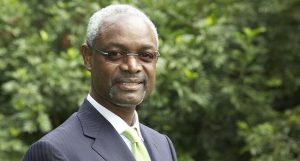Executive Secretary of the UN Convention to Combat Desertification (UNCCD), Mr Ibrahim Thiaw, says sustainable energy sources, including solar and wind power, can help communities globally to reverse desertification and land loss.

No fewer than 130 countries have already pledged to achieve land degradation neutrality by 2030 toward a world where human activity has a neutral, or even positive, impact on the land under UNCCD.
The UN supports innovative efforts worldwide, including the newly launched Great Green Wall Observatory, which tracks progress of Africa’s largest land restoration initiative to combat land degradation, desertification and the negative impacts of climate change in the Sahel region.
Thiaw said this in his message to mark the World Day to Combat Desertification and Drought, marked annually on June 17.
He said desertification is happening at the local level as much as it is global.
“Unless we address this at the local level, we will never be able to actually control it at the global level. Global policies and global decisions are needed.
“The impacts are huge in terms of food security and food sovereignty.
“It also drives forced migration. If people can no longer produce food on their land then they will migrate. As we have seen for example in the Sahel or Haiti, there can be severe consequences for global security.
“When people fight over access to land and water, it leads to more conflicts. We are seeing more of this, and it has consequences on the homogeneity of communities and on national economies,’’ Thiaw told UN News.
Thiaw said it was estimated that up to 50 per cent of the global GDP might be lost by 2050 due to challenges with agriculture and food production unless we address the issue of land loss and desertification.
He said that land loss had been happening around the world and that land degradation had been affecting arid and less arid lands.
“But in terms of drylands and desertification, it is estimated that 45 per cent of the land surface is affected by desertification.
“Maybe it is more striking to say that 3.2 billion people or one third of the world population are affected by that.
“Every year a hundred million hectares of land is being degraded, an area the size of Egypt. We need to halt land degradation, but we also need to restore 1.5 billion hectares of land,’’ he said.
Thiaw said that land degradation could be addressed by improving the techniques of agriculture, reducing the impact on land in terms of extraction of minerals and other extractive industries.
“It is also important that we reduce the pressure in terms of people activities in some parts of the world so as to diversify the economy and create more opportunities to create income.
“Restoring degraded land is not an expensive activity to undertake, but it is absolutely essential to provide more food security and to reduce conflicts.
“Every single dollar invested in land restoration can generate up to $30 in economic benefits, so investment in restoration activities is quite profitable from the economic point of view.
“This is not just the responsibility of local communities but also of governments and crucially of the private sector because the largest driver of land use in the world is big agriculture,” he said.
According to him, land degradation is a global phenomenon that affects all countries, including the U.S., India, China, India, and Pakistan.
The official, however, noted that the impact is much more severe in small countries, and small economies that do not have reserves, nor the insurance systems to protect their people.
“And the level of vulnerability is much higher in communities whose revenues are only based on the income they can generate from land,” he said.
Thiaw said that desertification didn’t exist in isolation and that it was an amplifier of climate change. because with extreme events, you also have severe impact on land and on communities and local economies.
“So basically, they are mutually interacting, and it is therefore important to have a more comprehensive global picture.
“It is wrong to think that you can protect biodiversity or the land without tackling the climate issue and vice versa,’’ he said.
He further said that small-scale interventions at a local level were very important, noting that we should not discard all of the efforts that are being made by the local communities day in, day out.
“They need much more support from governments. They also need to see less subsidies for the agriculture industry, that is destroying the environment. Public money that, in some cases, is destroying the environment should be used to actually rebuild economies. “
Speaking on Mauritania his country, Thiaw said he had seen land degradation in his lifetime, noting that at the same time, he also has a lot of hope as he expresses optimism in positive changes coming.
“I see the younger generation being conscious of the fact that they need to reverse the trend.
“I see more farmers and pastoralists trying to do their bit.
“I see more interventions from the international community, including from the humanitarian world that are investing in land restoration.
“So, I see a movement which gives me some hope that if we join our efforts and if we work in a collaborative manner, it would be possible to actually reverse the trend.’’
Thiaw, however, reiterated that the best hope he had was in energy, which was the missing link for development, and for small and medium enterprises.
According to him, energy is now accessible in remote places thanks to our ability to harness solar and wind energy.
“The possibility of combining energy and agriculture is very positive, as you can harvest water, store food, and reduce food loss. You can process that food to create chains at the local level,’’ he said.
By Cecilia Ologunagba
